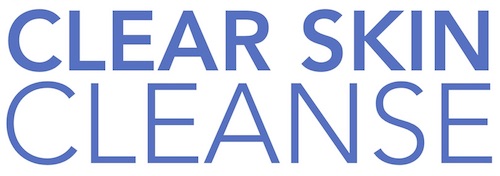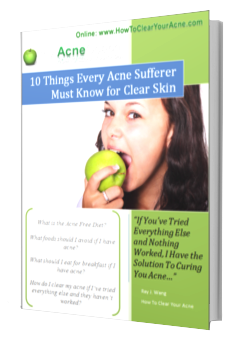Chocolate, it’s something that everybody loves it, fruits and vegetables want to be it, it’s an all time favorite and an all time forever. Not only is it a perfect valentines gift for that special someone in your life. It’s also an amazing functional food that can change your life if used properly in your diet.
But if you know anything about chocolate, you know it’s NOT the chocolate itself but actually the cacao within the chocolate that contains most of the health benefits.
Here’s a version of one of my term papers that’s been reedited and modified for HowtoClearYourAcne.com for your enjoyment and understanding.
THE HISTORY OF CACAO
The secret of the cacao was actually discovered on a tree almost 2,000 years ago in the troptical rainforests of the Americas. The story of how chocolate came about stems from the acneint cultures of Mexico and Central Amerca. Chocolate’s birth began in a beverage mixed of ground cacao seeds with various seasonings to make a spicy and frothy drink. It wasn’t until much later that the Spanish conquistadors brought back the cacao seeds to their homeland Spain where new chocolate took on a new shape and eventually the form that we know today.
WHAT MAKES CHOCOLATE HEALTHY?
The active constituents within chocolate, or really within cacao, are flavonoids, potassium, iron, phosphorus, monounsaturated fatty acids, and stearic acid. Flavonoids, also known as bioflavonoids, are the most important pigments in plants and flowers producing a yellow or red/blue pigmentation. Flavonoid filled foods can help protect blood vessels from rupture or leakage, enhance the usage of vitamin C in the body, protect cells form oxidation, and also act as an anti-inflammatory agent. Generally, flavonoids are antioxidants.
Potassium can help the muscles and nerves in the body better function, maintain the proper electrolyte and acid-base balance, and also help lower the risk of high blood pressure. Iron is an essential part of hemoglobin in the blood and myoglobin in the muscles. Iron aids in immune function, cognitive development, temperature regulation, energy metabolism and work performance. Next to calcium, phosphorus is one of the most abundant minerals in the human body. It works closely with calcium to build strong bones and teeth and is needed for the growth and maintenance of all tissues, cells, genetic building blocks, DNA and RNA. Not only that, Phosphorus also plays a part with other vitamins and minerals in the body including vitamin D, iodine, magnesium, and zinc.
Monounsaturated fatty acids, also known as omega 9, is believed to help lower cholesterol and assist in reducing heart disease. Like it’s cousin, polyunsaturated fatty acid or omega 3, it also provides essential fatty acids for healthy skin. On top of all that, monounsaturated fats are high in vitamin E and also believed to fight certain cancers such as breast or colon cancer. Stearic acid, is a saturated fatty acid most commonly found in animal fats and vegetable oils including beef fat and cocoa butter. Studies have suggested that stearic acid has little effect on blood cholesterol levels even though it is a saturated fat.
IS CHOCOLATE ADDICTIVE?
When university students from Shippensburg University in Pennsylvania and the Universidad Nacional de Educacion a Distancia in Madrid, Spain, were asked to fill out a questionnaire about the foods that they craved the most, nearly 50% of the all the American women craved chocolate, while only a little more than 25% of Spanish women did.
Chocolate may be a cultural phenomenon that applies more heavily here in the states. May it’s just us here in America that are addicted to chocolate? In other words, chocolate itself is not addictive, but people in America have created a whole culture about it.
So the next time you think that it’s the chocolate that’s causing you to crave more chocolate, you may only have yourself… to blame. =O
THE TRUTH OF THE MATTER: THE POINT
Honestly, chocolate probably isn’t going to “cure” any diseases any time soon. But if used properly, chocolate may be able to replace many of the other “less healthy” desserts on the menu. According to a study on the Metabolic Effects of Dark Chocolate Consumption on Energy from the American Chemical Society in 2009, chocolate can actually reduce the levels of stress hormones in highly stress individuals, as well as correct stress related biochemical imbalances. In this study, the consumption of “dark chocolate reduced the urinary excretion of the stress hormone cortisol and catecholamines and partially normalized stress-related differences in energy metabolism (glycine, citrate, trans-aconitate, proline, ?-alanine) and gut microbial activities (hippurate and p-cresol sulfate). The study provides strong evidence that a daily consumption of 40 g of dark chocolate during a period of 2 weeks is sufficient to modify the metabolism of free living and healthy human subjects, as per variation of both host and gut microbial metabolism.”
CHOCOLATE CONTAINS ANTIOXIDANTS
Chocolate may be able to act as an antioxidant within individuals and appease the free radical situation as well as appease the taste bud “situation” within individuals as well. The fact that chocolate has the power to reduce stress levels may just have a lot to do with the fact that it tastes delicious, or it could also be the fact that chocolate contains flavonoids, potassium, iron, phosphorus, monounsaturated fatty acids, and stearic acid with the noted benefits above.
Polyphenols are a type of antioxidant. The University of Scranton in Pennsylvania found that the polyphenols in a single milk chocolate bar was equivalent to five servings of fruits and vegetables. It also found that the the polyphenols in a single milk chocolate bar was equal to that in one glass of wine.
Polyphenols in single milk chocolate bar = five servings of fruits and vegetables = a glass of wine
Here’s the interesting part though… because when I told you earlier that milk chocolate has the same amount of antioxidant polyphenols as that of five servings of fruits and vegetables, a switch in a lot of people’s heads automatically clicked on and said, “OH GREAT! Now I have an excuse to eat more chocolate!”
But here’s the kicker, no one knows actually knows if the polyphenols in the chocolate can actually help to lower the heart disease risk. In other words, people know that the polyphenols in chocolate exists and but they don’t know if it’s as effective or the same as eating five servings of fruits and vegetables. So just keep that in mind the next time you hear someone tell you about all the positive benefits of a skeptical food. It may be true, but it’s important to think critically.
CAN CHOCOLATE REDUCE STRESS?
According to the Metabolic Effects of Dark Chocolate Consumption on Energy, Gut Microbiota, and Stress-Related Metabolism in Free-Living Subjects of the American Chemical Society published on October 7, 2009, “The present study reports the metabolic responses of free living subjects to a daily consumption of 40 g of dark chocolate for up to 14 days. A clinical trial was performed on a population of 30 human subjects, who were classified in low and high anxiety traits using validated psychological questionnaires.” So as far as a recommended amount per day, probably anything that doesn’t give you a stomach ache or a tooth ache.
As far as the taste, I love the taste of chocolate. And if I could improve the taste of chocolate, I’d add strawberries to the flavor but wait… that’s already been done. Then I would add vanilla to chocolate. That’s been done too. Milk chocolate? Peanut butter chocolate? Chocolately chocolate? Maybe I’m a little too late on this one.
BUT WAIT! THE IMPORTANT THING TO
So there, if there was any doubt in your mind about whether or not chocolate was considered a good food for you, I’ve just provided a good amount of evidence that chocolate does indeed contain constituents that can provide the body with a certain amount of benefit.
HOWEVER!!!
BUTT!!!
=)
Now it’s time to look at the other side of chocolate… and what a lot of people fail to see when it comes to skin care, acne and chocolate… and also a great chocolate bar that you can eat if you love chocolate but don’t want to ruin your health.
“All you need is love. But a little chocolate now and then doesn’t hurt.” – Charles M. Schulz
-Ray
NEXT STEP:
|
10 Steps to Cure Acne10 Things Every Acne Sufferer Must Know for Clear Skin. A must have basic foundation for any beginner. Regular Price: Your Price: $19.97
|



